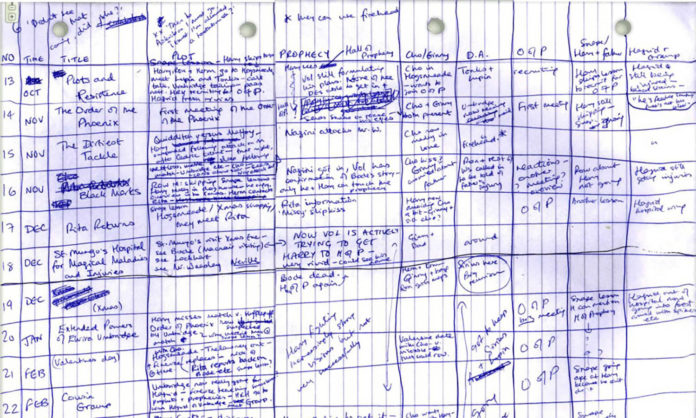
In a post on DIY MFA, Claire Fraise explains why she uses a plot grid to outline her mystery novels. “Books in this genre can become overwhelming if a writer doesn’t have a way to keep track of all the clues and red herrings thrown into the plot,” she says. “I used to get bogged down in the nitty-gritty details of a story. I’d lose motivation halfway through because I forgot all the clues I already put in and I didn’t know where I was going.”
Enter plot grids, an outline in grid form. “I make my plot grids in Excel or Google Sheets because I make changes to mine all the time and constantly rewriting them by hand would drive me insane,” Fraise says. “Each column in a plot grid corresponds to a plot or subplot in your novel, and each row corresponds to a chapter.” She says grids help her writing in three ways:
- They allow her to see the big picture. “Plot grids help me stay focused on where I’m going,” she says. “If I feel like I’m getting lost, I can always see what I need to include in every chapter to keep each plot and subplot moving forward. I can still explore in my drafts, but when I need to get back on track, I can do so easily.”
- They speed up drafting. “Because I always know what I need to accomplish in a scene, I can get chapters written more quickly and my drafts are cleaner because I have already done a lot of the brainstorming and problem solving up front,” Fraise writes.
- They help keep track of subplots. “Things don’t get dropped, so my drafts don’t feel as out of control,” she adds. “Each individual column lets you keep track of things like individual character growth, relationships, and clues pointing toward red herrings, so you can make sure nothing slips through the cracks.”











